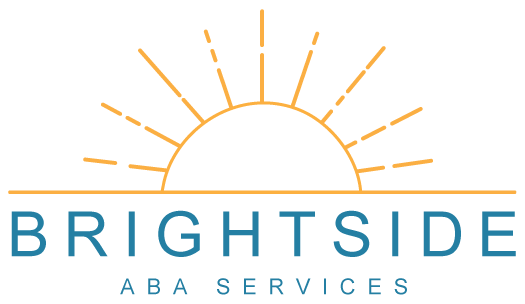About Applied Behaviour Analysis (ABA)
Why Choose ABA?
Brightside is staffed by a group of dedicated and experienced individuals who are passionate about assisting children and young adults to reach their goals. Our consultants place a high level of importance on empowering families to thrive in their own unique situations.

What is ABA?
Applied Behavior Analysis (ABA) is based on the science of learning and behavior. ABA is evidence-based and helps professionals and families understand how behavior works and how it is affected by the environment around us. The general goal of ABA is to increase behaviors that are pro social and beneficial and decrease behaviors that are inappropriate or harmful. The basic principles of ABA consist of positive reinforcement. When an individual engages in pro social and beneficial behaviors they are positively reinforced or rewarded which in turn increases their behavior. Through systematic use of the principles of ABA the target behavior for an individual can be increased or decreased.
What is autism?
Autism is a neurodevelopmental disorder that can affect the social, communication and behavioral skills of an individual. Professionals are able to observe and assess certain behaviors that are associated with autism in early infancy. The behaviors commonly associated with autism can vary as every individual with autism is different; however, there are a few characteristics necessary for diagnosis: Impairment in social interaction (e.g., limited eye contact, difficulty responding to name), communicative deficits (e.g., difficulty asking for help), and repetitive behavior (e.g., hand flapping). It is important to remember that autism is a spectrum disorder where individuals vary widely in the severity and type of behaviors they exhibit. Even though autism is a lifelong disorder, with the right services certain skills can be improved to better aid individuals in their daily life.
What if my child does not have autism?
The term ABA is often associated with autism and is commonly provided to individuals with autism however the principles of ABA can be used in intervention strategies for individuals with other diagnoses. Due to its wide-reaching scope of practice, ABA can be used for any individual who can benefit from therapy that will aid in increasing healthy positive behaviours in many domains.
How is ABA used to support my child’s goals?
In ABA therapy, when a goal is identified it is broken down into smaller parts. For example, if an individual is learning how to wash their hands the goal could be broken down into the following steps:
-
Turning on the tap
-
Wetting hands
-
Pumping soap on hands
-
Rubbing hands together
-
Wetting hands
-
Turning off the tap
-
Drying hands with a towel
-
Disposing the towel
By breaking down a goal into smaller parts, professionals can gradually teach and shape the individual to complete each step. The individual will be rewarded after completing each step until they are able to complete the whole task, washing their hands.
When addressing challenging behaviours such as physical aggression or self-injurious behaviour, ABA uses a functional behaviour assessment process to help determine the reasons why the behaviour is occurring. This involves objective assessment of the behaviours, development of a treatment plan and continuous monitoring of the plan to ensure progress is being made. The ABA plan would also include teaching the individual an alternative behaviour that helps them functionally communicate their needs and wants.
Who provides ABA services?
All services are supervised by a Registered Behaviour Analyst (ONT.) (who is on the OAP Provider List) and services may be delivered by either or a combination of our Clinical Therapists or Instructor Therapists .
